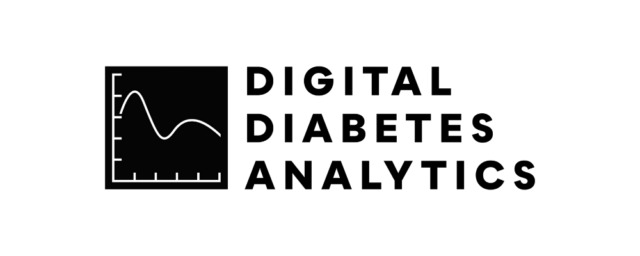
Fully managed expert AI teams for your organization
Modulai is an opinionated, no-bullshit, maximum-impact AI partner
How we implement AI














Wanna discuss how applied AI can realize your vision?
 >
>
Highlight detection and automatic video editing for online game streamers
Modulai has built a object-detection based system for detecting highlights and memorable events in online gaming streams for automatic editing of dense highlight reels.
Modulai has built a object-detection based system for detecting highlights and memorable events in online gaming streams for automatic editing of dense highlight reels.
Diffusion models for time-series forecasting
Diffusion models for complex graph-structured time series forecasting of electricity flows
Diffusion models, celebrated for their image-generation capabilities, are revolutionizing time series forecasting. By learning to denoise data and understand complex statistical distributions, these models offer probabilistic and diverse forecasts

Customizable and secure search and chat agent
Aiming for companies and use-cases that either can’t risk compromize data security or need special adaptation, we’ve developed a modular platform to fill the gap between traditional SaaS solutions and custom development.
Based on the learnings from numerous projects over the past two years, we have developed a safe and isolated RAG solution for companies with needs beyond vanilla SaaS solutions.

AI powered shopping assistant for e-commerce
Based on discussions and feedback from multiple e-commerse platforms, we’ve developed an easily integratable shopping assistant that lets site visitors ask natural language questions about the product catalouge and get recent, relevant and actionable resposes in real-time.
In the highly competitive e-commerce industry, customer service plays a crucial role in sustaining and growing the business. Customers nowadays expect instantaneous, accurate, and personalized responses to their queries. Traditional customer service methods are no longer sufficient to meet the growing demands and expectations of the online shopping community. To bridge this gap, an AI-powered shopping assistant bot capable of understanding and navigating the vast product catalog and providing instant, relevant answers is a necessity.

On-device, real time car fuel lid detection
We developed a CPU-optimized object detection model for on-device detection of fuel lids on cars.
The model was integrated into the central control system of the fueling rig, taking the role of the main detection mechanism, firstly to make sure the car is in the right position, and secondly to guide the fueling arm to the fuel door lid in real-time.When optimizing the model for CPU inference, we explored TensorFlow Lite and OpenVINO. In the end, we used OpenVINO which is a framework for optimizing deep neural nets on Intel CPU’s.

Social feed and video recommender for Frever
Engineers at Frever and Modulai teamed up in close collaboration to create an end-to-end machine-learning-based feed recommender system. A multi-model system architecture was developed and populates the feeds of every user. Information about the content of the video as well as indicators of the users’ preferences is taken into account to ensure the best possible experience and relevance.
Frever’s unique video-creation and social content sharing app enables their users’ creativity. Users create personalized avatars and express themselves through music videos, stories, and vlogs.

Leveraging 3D Engines for Data Generation in Deep Learning
Applied to the specific case of scene text detection.
In the field of computer vision, synthetic data generation is especially interesting since the number of relevant resources and tools have grown and improved significantly over the years. The development has not been in the field of machine learning though, but rather in game engines such as Unreal Engine, Blender and Unity. Often produced by professional designers, realistic scenes are produced offering great details.

Explainable AI in medicine: Detecting AF in ECG data
Machine learning models usually do not explain their predictions. This is a significant barrier to adaptation in domains like medicine, where understanding how the model works is vital.
In this blog post, we take a look at how explainability techniques can be used on a deep learning model predicting atrial fibrillation from sinus ECG (electrocardiogram) data.

Product recommendations for Ahlsell’s website and app
We helped out with kickstarting the in-house AI capabilities at Ahlsell by collaborating on the development of a recommender system for their website and smartphone app.
In close collaboration with Ahlsell’s data scientists, the team developed an end-to-end pipeline handling data ingestion, data processing, and model predictions. The recommendation system consists of a collaborative filtering model as well as a content-based model.

Detecting food intake in glucose time-series from diabetes patients
Together with Digital Diabetes Analytics, we created a meal detection system using glucose level data to help people with insulin-treated diabetes.
Today, more than 5,5 million people worldwide live with type 1 diabetes and need insulin-based treatment to survive. When it comes to diabetes, there’s no “one treatment fits all”, therefore doctor’s need support in optimizing treatments for each patient.

Recommendation system for Skincity
Providing accurate skin product recommendations online is difficult. We built a system that combines the knowledge of the skin therapists with product- and customer behavior data to increase product recommendation accuracy with the aim of driving higher conversion rates and customer satisfaction.
The client is an online skincare clinic that offers a finely-tuned selection of professional skin care products and make-up. Central to their operation are the customized product recommendations customers receive from their experienced skincare therapists.

Classification of hypoglycemia causes in blood sugar time series
We give an overview of a study conducted in collaboration with Daniel Espes and Per-Ola Carlsson at Uppsala University aiming to improve the treatment of type 1 diabetes.
Type 1 diabetes is one of the most common chronic disorders among children and adolescents but affects people of all ages and globally more than 5 million people are affected.

Predicting a company’s future financial performance
Modulai built a deep learning based system for predicting the values of various fields in a company’s annual report – a year in the future.
Currently, there exist ML models to predict different financial KPIs such as debt, profits, revenue, etc. of a company based on their historic values. The values of these fields are related and dependent on each other.

Detecting faulty transmission pole guy wires in drone images
The system consists of deep learning and traditional machine learning parts and is able of screening vast amounts of drone images to detect faulty guy wires.
The objective of the project was to create a machine learning pipeline to analyze images from power lines and detect lack of tension in guy wires. To solve this problem, the team broke down the problem in different stages and created a multi-model AI solution, in close collaboration with the client.













